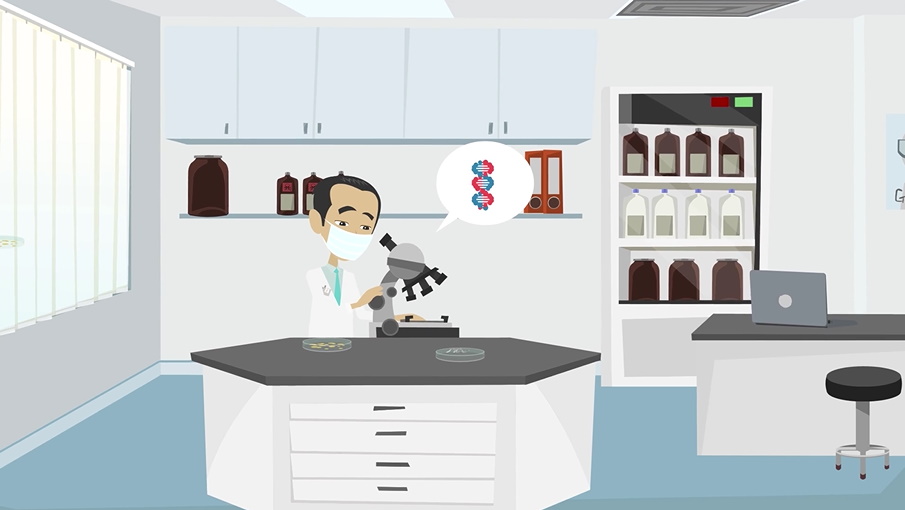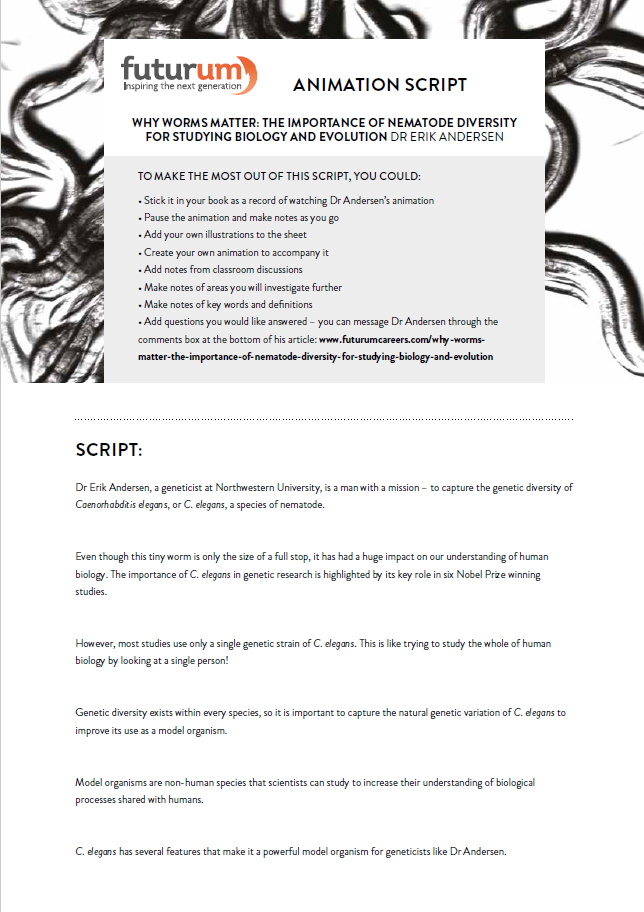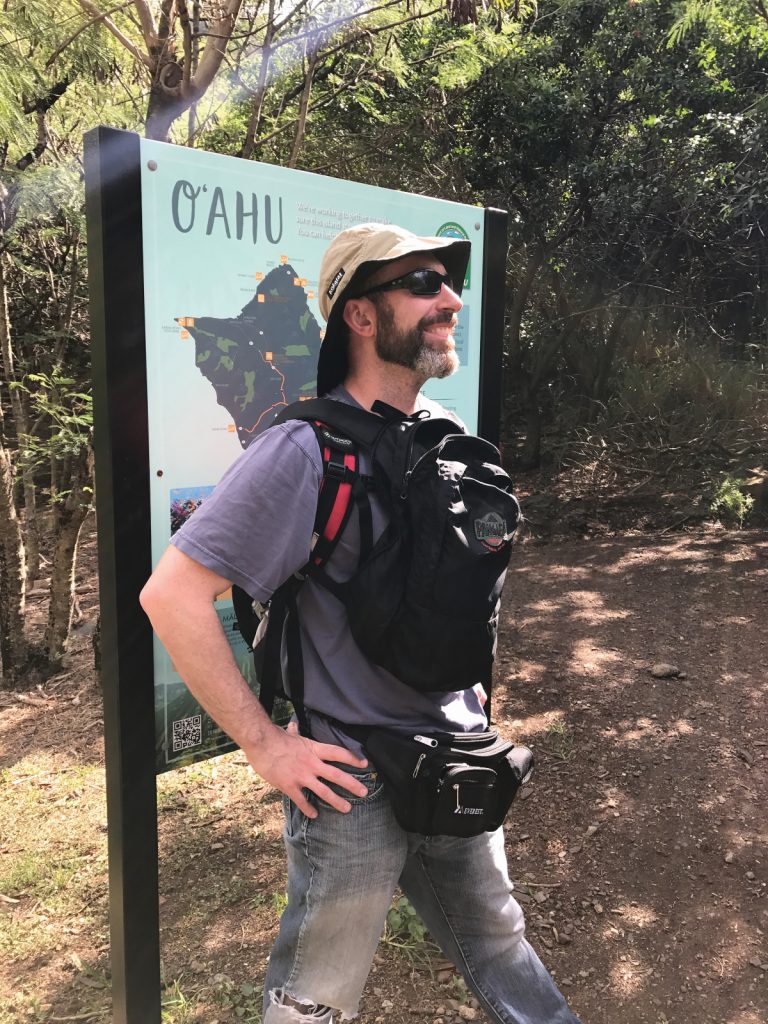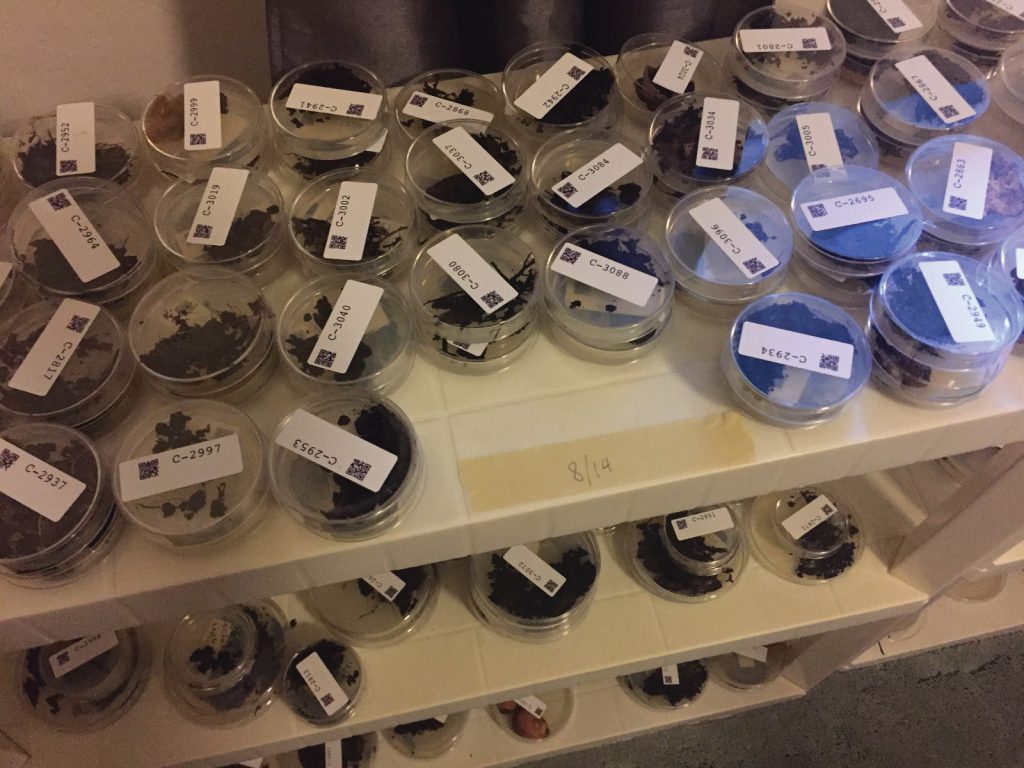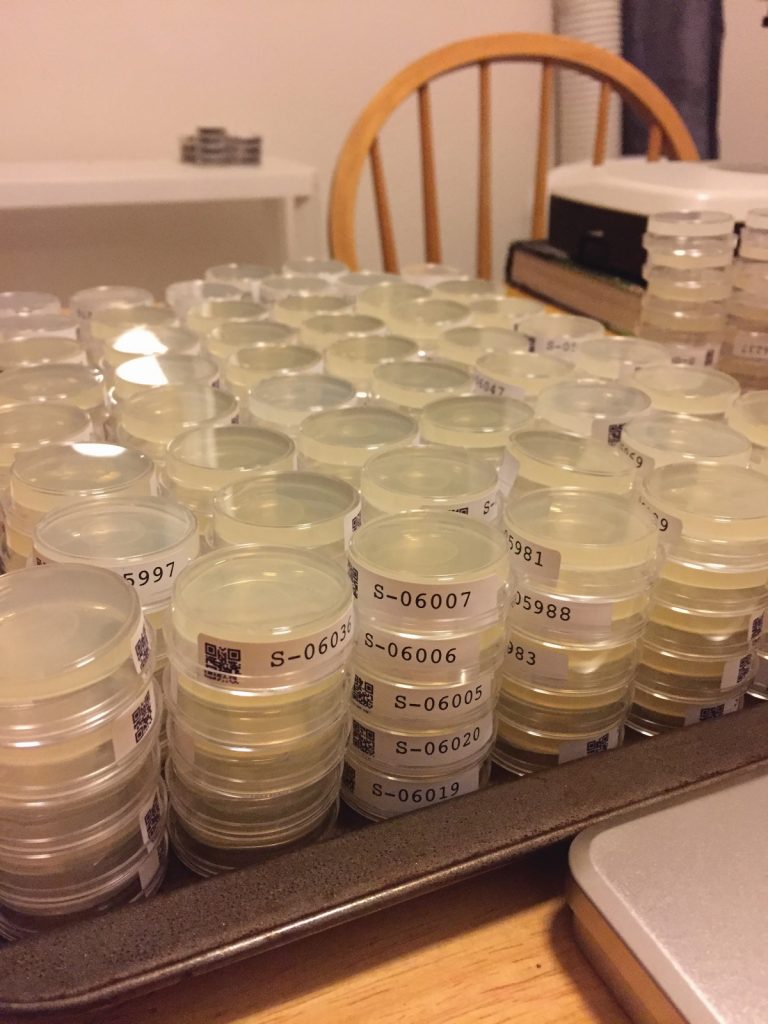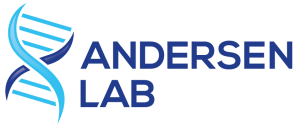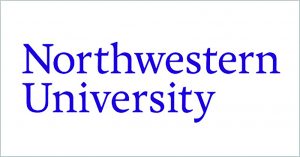Why worms matter: the importance of nematode diversity for studying biology and evolution
Dr Erik Andersen, of Northwestern University in the USA, is a man with a mission – to capture the genetic diversity of Caenorhabditis elegans. This tiny worm is used by geneticists around the world to improve our understanding of human biology. So far, six Nobel prizes have been awarded for discoveries using C. elegans. Even though this little worm is only the size of a comma, it has had a huge impact on our understanding of biology. Most studies use only a single strain of C. elegans, which is like studying a single human to learn about our entire species. Clearly, we know that diversity exists in our species, so incorporating C. elegans diversity into this powerful model organism can enable even more discoveries. Find out how you can help Dr Andersen accomplish his mission and contribute to advancing the field of genetics
TALK LIKE A GENETICIST
NEMATODE – a diverse range of roundworms that inhabit a wide range of environments
PARASITE – an organism that lives off another organism (the host), sometimes causing damage to the host
MODEL ORGANISM – a species that is easy to grow in the laboratory and helps scientists increase our understanding of biological processes shared with humans
CAENORHABDITIS ELEGANS (C. ELEGANS) – a non-parasitic nematode, which is used as a model organism for genetic experiments
GENETIC DIVERSITY – the variation in the genes of individuals among a population or species
GENOME – all the genetic material belonging to an individual organism
ANTHELMINTIC DRUGS – a group of drugs that kill parasitic worms
Roundworms are nematodes, a diverse group of organisms that have adapted to nearly every ecosystem, with over 25,000 known species and likely up to a million different species found across the world. Some of these species are parasites that infect plants, livestock, pets, and even humans. Although these infections are often not deadly, nematodes do cause illness and decrease agricultural productivity.
One species of nematode, Caenorhabditis elegans, is one of the most genetically studied organisms on the planet because it is used as a model organism. Model organisms are non-human species that scientists can study to increase their understanding of biological processes shared with humans. C. elegans shares many genes with humans and can easily be grown in a lab, making it a desirable target for studying genetic traits that are relevant to humans. The importance of C. elegans in genetic research is exemplified by its key role in six Nobel Prize winning studies.
However, most of the research conducted using C. elegans is limited to a single laboratory-adapted strain that was isolated from the wild in the 1950s. This means almost all biological and genetic research from C. elegans involves identical genetic information from a single individual organism. “This is like trying to study the whole of human biology by just looking at a single person!” explains Dr Erik Andersen.
Dr Andersen is an Associate Professor at Northwestern University, where he is building a collection that contains the genetic information of wild C. elegans strains. By understanding the natural variation within C. elegans populations, studies using C. elegans as a model organism can be improved, advancing our understanding of human biology.
WHY IS C. ELEGANS USED AS A MODEL ORGANISM?
C. elegans is a powerful model organism used to study genetics, development, cell biology, and neurobiology. “We know the locations of every cell and the connections of every neuron in C. elegans nematodes,” explains Dr Andersen. “Importantly, these cells and neurons are the same in every single C. elegans animal.”
The life cycle of C. elegans is only 3.5 days and they can be stored frozen then brought back to life. The worms are about 1 millimetre in size and their genome is 1/30 the size of the human and so is much easier to study. All these features mean that C. elegans is a powerful model organism. Additionally, C. elegans is also a good model to study parasitic nematodes. Unlike parasitic nematodes, C. elegans does not require a host organism to grow, meaning it can easily be grown and experimented on in the laboratory. “Unsurprisingly, not many people will volunteer to be a host for a parasitic nematode!” says Dr Andersen.
COLLECTING WILD NEMATODES
To determine the genetic diversity of wild populations of C. elegans, Dr Andersen and his team collect broad and unbiased samples of nematodes from natural environments. Dr Andersen needed a location that represented the largest range of genetic diversity and so extensive fieldwork was carried out on the Hawaiian Islands. “We believe that Hawaiian C. elegans have more genetic diversity than the rest of the world,” explains Dr Andersen. The Pacific region, where Hawaii is located, is likely the source of C. elegans before they spread around the globe. This means they have a large stable population that has allowed for greater genetic variation over time.
Dr Andersen and his team collect nematodes in Hawaii every few months, allowing them to discover diverse strains (or genetically unique individuals) that may only exist in certain climates at certain times of the year. “On each collection trip, we go on hikes and pick up rotting fruits, tubers, nuts, fungus or leaf litter every 100 steps,” explains Dr Andersen. “With each sample collection, we take a picture, record the substrate temperature, ambient temperature, ambient humidity, and a variety of other environmental parameters.” The samples are mailed back to the laboratory, where the nematodes crawl off the vegetation and are collected by scientists, who place them in Petri dishes and allow them to grow.
After a couple of days, the species of each strain can be determined. Any C. elegans strains will have their entire genome sequenced, allowing genetic differences in the wild strains to be identified. Each new strain is added to the genetic dataset, building a resource of global C. elegans genetic diversity.
A ‘CYCLE OF DISCOVERY’
Dr Andersen’s laboratory is using this resource to conduct a range of genetic research. The discoveries from C. elegans can inform studies in parasitic nematodes, which in turn can inform new studies on C. elegans in a ‘cycle of discovery’. This cycle of discovery is a powerful method because both C. elegans and parasitic nematode species have distinct advantages and disadvantages for their use in laboratory studies.
Dr Andersen has used a cycle of discovery to look at the genetic factors responsible for resistance to anthelmintic drugs. “Discoveries that broadly apply to nematode drug resistance would not be possible without this interplay between the two species,” says Dr Andersen. “We use the advantages of C. elegans genetics to discover specific genes and molecular mechanisms for drug resistance.” And by determining how natural diversity in nematodes enables them to develop resistance to drugs, Dr Andersen and his team are identifying new anthelmintic resistance genes using genetic mapping experiments.
Dr Andersen has also investigated the sensitivity of some C. elegans strains to chemotherapy drugs, showing that their natural genetic diversity influences the molecular mechanisms that cause differences in the responses to chemotherapy in humans. These discoveries show that genetic research with nematodes can be transformed to knowledge in human medicine.
HOW CAN YOU HELP DR ANDERSEN?
Dr Andersen’s resource of genetic information is essential for ensuring that research using C. elegans as a model organism reflects the true genetic diversity of the species. He hopes to increase the number of C. elegans strains available to the research community, saying, “We collect, organize, and disseminate these wild C. elegans strains and their genome data to the world so that these resources can impact the broader community.” Other researchers who work with C. elegans can visit Dr Andersen’s strain resource and order the strain they want to work with. Dr Andersen’s lab will send frozen nematodes of this strain so that the researcher can thaw and experiment on these strains in their own laboratory.
And you can help Dr Andersen by collecting more nematodes for his resource! When you are next on a hike, pick up some rotting material and send it to Dr Andersen. This will almost always have nematodes within it, which Dr Andersen will analyse and add to his collection. “You could add crucial new information to our natural diversity resources,” says Dr Andersen. “You might even find a new species!”
 DR ERIK ANDERSEN
DR ERIK ANDERSEN
Department of Molecular Biosciences and Department of Cell and Developmental Biology, Northwestern University, USA
FIELD OF RESEARCH: Genetics, Genomics, Evolutionary Biology
RESEARCH PROJECT: Collecting wild strains of the nematode C. elegans and building a resource of natural genetic diversity
FUNDERS: National Institutes of Health, National Science Foundation, Human Frontiers Science Program, American Cancer Society, The Pew Charitable Trusts, March of Dimes
Reference
https://doi.org/10.33424/FUTURUM201
NEMATODE – a diverse range of roundworms that inhabit a wide range of environments
PARASITE – an organism that lives off another organism (the host), sometimes causing damage to the host
MODEL ORGANISM – a species that is easy to grow in the laboratory and helps scientists increase our understanding of biological processes shared with humans
CAENORHABDITIS ELEGANS (C. ELEGANS) – a non-parasitic nematode, which is used as a model organism for genetic experiments
GENETIC DIVERSITY – the variation in the genes of individuals among a population or species
GENOME – all the genetic material belonging to an individual organism
ANTHELMINTIC DRUGS – a group of drugs that kill parasitic worms
Roundworms are nematodes, a diverse group of organisms that have adapted to nearly every ecosystem, with over 25,000 known species and likely up to a million different species found across the world. Some of these species are parasites that infect plants, livestock, pets, and even humans. Although these infections are often not deadly, nematodes do cause illness and decrease agricultural productivity.
One species of nematode, Caenorhabditis elegans, is one of the most genetically studied organisms on the planet because it is used as a model organism. Model organisms are non-human species that scientists can study to increase their understanding of biological processes shared with humans. C. elegans shares many genes with humans and can easily be grown in a lab, making it a desirable target for studying genetic traits that are relevant to humans. The importance of C. elegans in genetic research is exemplified by its key role in six Nobel Prize winning studies.
However, most of the research conducted using C. elegans is limited to a single laboratory-adapted strain that was isolated from the wild in the 1950s. This means almost all biological and genetic research from C. elegans involves identical genetic information from a single individual organism. “This is like trying to study the whole of human biology by just looking at a single person!” explains Dr Erik Andersen.
Dr Andersen is an Associate Professor at Northwestern University, where he is building a collection that contains the genetic information of wild C. elegans strains. By understanding the natural variation within C. elegans populations, studies using C. elegans as a model organism can be improved, advancing our understanding of human biology.
WHY IS C. ELEGANS USED AS A MODEL ORGANISM?
C. elegans is a powerful model organism used to study genetics, development, cell biology, and neurobiology. “We know the locations of every cell and the connections of every neuron in C. elegans nematodes,” explains Dr Andersen. “Importantly, these cells and neurons are the same in every single C. elegans animal.”
The life cycle of C. elegans is only 3.5 days and they can be stored frozen then brought back to life. The worms are about 1 millimetre in size and their genome is 1/30 the size of the human and so is much easier to study. All these features mean that C. elegans is a powerful model organism. Additionally, C. elegans is also a good model to study parasitic nematodes. Unlike parasitic nematodes, C. elegans does not require a host organism to grow, meaning it can easily be grown and experimented on in the laboratory. “Unsurprisingly, not many people will volunteer to be a host for a parasitic nematode!” says Dr Andersen.
COLLECTING WILD NEMATODES
To determine the genetic diversity of wild populations of C. elegans, Dr Andersen and his team collect broad and unbiased samples of nematodes from natural environments. Dr Andersen needed a location that represented the largest range of genetic diversity and so extensive fieldwork was carried out on the Hawaiian Islands. “We believe that Hawaiian C. elegans have more genetic diversity than the rest of the world,” explains Dr Andersen. The Pacific region, where Hawaii is located, is likely the source of C. elegans before they spread around the globe. This means they have a large stable population that has allowed for greater genetic variation over time.
Dr Andersen and his team collect nematodes in Hawaii every few months, allowing them to discover diverse strains (or genetically unique individuals) that may only exist in certain climates at certain times of the year. “On each collection trip, we go on hikes and pick up rotting fruits, tubers, nuts, fungus or leaf litter every 100 steps,” explains Dr Andersen. “With each sample collection, we take a picture, record the substrate temperature, ambient temperature, ambient humidity, and a variety of other environmental parameters.” The samples are mailed back to the laboratory, where the nematodes crawl off the vegetation and are collected by scientists, who place them in Petri dishes and allow them to grow.
After a couple of days, the species of each strain can be determined. Any C. elegans strains will have their entire genome sequenced, allowing genetic differences in the wild strains to be identified. Each new strain is added to the genetic dataset, building a resource of global C. elegans genetic diversity.
A ‘CYCLE OF DISCOVERY’
Dr Andersen’s laboratory is using this resource to conduct a range of genetic research. The discoveries from C. elegans can inform studies in parasitic nematodes, which in turn can inform new studies on C. elegans in a ‘cycle of discovery’. This cycle of discovery is a powerful method because both C. elegans and parasitic nematode species have distinct advantages and disadvantages for their use in laboratory studies.
Dr Andersen has used a cycle of discovery to look at the genetic factors responsible for resistance to anthelmintic drugs. “Discoveries that broadly apply to nematode drug resistance would not be possible without this interplay between the two species,” says Dr Andersen. “We use the advantages of C. elegans genetics to discover specific genes and molecular mechanisms for drug resistance.” And by determining how natural diversity in nematodes enables them to develop resistance to drugs, Dr Andersen and his team are identifying new anthelmintic resistance genes using genetic mapping experiments.
Dr Andersen has also investigated the sensitivity of some C. elegans strains to chemotherapy drugs, showing that their natural genetic diversity influences the molecular mechanisms that cause differences in the responses to chemotherapy in humans. These discoveries show that genetic research with nematodes can be transformed to knowledge in human medicine.
HOW CAN YOU HELP DR ANDERSEN?
Dr Andersen’s resource of genetic information is essential for ensuring that research using C. elegans as a model organism reflects the true genetic diversity of the species. He hopes to increase the number of C. elegans strains available to the research community, saying, “We collect, organize, and disseminate these wild C. elegans strains and their genome data to the world so that these resources can impact the broader community.” Other researchers who work with C. elegans can visit Dr Andersen’s strain resource and order the strain they want to work with. Dr Andersen’s lab will send frozen nematodes of this strain so that the researcher can thaw and experiment on these strains in their own laboratory.
And you can help Dr Andersen by collecting more nematodes for his resource! When you are next on a hike, pick up some rotting material and send it to Dr Andersen. This will almost always have nematodes within it, which Dr Andersen will analyse and add to his collection. “You could add crucial new information to our natural diversity resources,” says Dr Andersen. “You might even find a new species!”
 DR ERIK ANDERSEN
DR ERIK ANDERSEN
Department of Molecular Biosciences and Department of Cell and Developmental Biology, Northwestern University, USA
FIELD OF RESEARCH: Genetics, Genomics, Evolutionary Biology
RESEARCH PROJECT: Collecting wild strains of the nematode C. elegans and building a resource of natural genetic diversity
FUNDERS: National Institutes of Health, National Science Foundation, Human Frontiers Science Program, American Cancer Society, The Pew Charitable Trusts, March of Dimes
ABOUT GENETICS
Model organisms are incredibly important in biology, allowing scientists to learn about shared processes in humans. However, for model organisms to be accurate and useful, they must reflect the true genetic diversity of the population.
This is why Dr Andersen is highlighting the importance of using the natural diversity in wild populations of C. elegans. It is important to understand that every individual of a species has slightly different genetic information. Researchers should study this range of genetic information from wild nematodes, not only a single laboratory-adapted strain.
WHAT DOES DR ANDERSEN FIND MOST REWARDING ABOUT HIS FIELD?
Dr Andersen is excited about bringing more genetic diversity to his field. He wants to stop the focus of experiments on a single C. elegans strain and for researchers to embrace the genetic diversity that is all around us. “I am excited to bring C. elegans natural diversity to the community that focuses on only a single strain,” he says. “We have so many more discoveries to make once we incorporate these new strains.”
WHAT ISSUES ARE FACING THE NEXT GENERATION OF GENETICISTS?
Dr Andersen believes the biggest challenge facing the next generation of scientists is the recent obsession by funding agencies to focus on ‘translational’ research, where scientific advances in the laboratory are applied to human health issues, such as for developing new methods to diagnose or treat disease. This makes funding ‘basic’ research, where scientists try to answer fundamental scientific questions, much more difficult. However, Dr Andersen highlights that basic research often advances human medicine much more than more applied approaches. “From signalling pathways in cancer to genome editing to new mRNA vaccines, no one predicted that basic research would have had these huge impacts,” says Dr Andersen.
EXPLORE A CAREER IN GENETICS
• You can visit the website for Dr Andersen’s lab (www.andersenlab.org) and also visit his website where the genetic collection of wild C. elegans strains is organised (www.elegansvariation.org).
• Find a lab that works on a topic that excites you. Contact the lab and ask about working as a volunteer. It’s never too early to start laboratory research!
• Most faculty at Dr Andersen’s institution, Northwestern University, and at other universities, host high school students, undergraduates, and community volunteers to do independent research.
• Genetics is a branch of biology, so take biology classes at school. Some universities may offer undergraduate degrees in genetics, but a general biology degree will allow you to specialise in genetics as you progress through your studies.
• Genetics covers a broad range of topics, from molecular to population to quantitative to developmental genetics. “Take as many of these courses as you can,” says Dr Andersen. “Each one will teach you new aspects of inheritance and how to make discoveries using genetics.”
• Computer programming and statistics skills are incredibly important. “Programming skills in R, python, and the UNIX command line will give you a huge advantage over standard biologists,” says Dr Andersen.
HOW DID DR ANDERSEN BECOME A GENETICIST?
WHAT WERE YOUR INTERESTS WHEN YOU WERE YOUNGER?
From a young age, I was interested in nature and being outdoors. I grew up around lakes and forests, which defined much of my childhood interests. Additionally, I am an avid swimmer. This interest eventually was enhanced by SCUBA diving, providing me with another way to experience nature.
WHAT INSPIRED YOU TO BECOME A SCIENTIST?
In sixth grade, my science class read small packets of current science topics weekly. In one of these classes, we read about genetically engineered corn where genes that encode a crystal toxin from bacteria were added to corn to naturally fight off pest infections. I was amazed that you could take genes from one species and put them into the other. That was the point I realised I wanted to be a geneticist. My early interest was amplified by short lab experiences working with Drosophila (fruit flies) and molecular genetics at my local college while I was in high school. I chose my undergraduate school because I knew I could start doing genetics research in my first year.
WHAT ATTRIBUTES HAVE MADE YOU SUCCESSFUL AS A SCIENTIST?
My mother was an Italian immigrant who inspired me to work hard. I get up early and go to bed late, putting everything I can into my research and the people in my laboratory. Additionally, it’s important for a scientist to be resilient. I am not slowed by the many difficulties and failures that I often encounter in science and in life. I strongly believe that hard work on many different topics can always yield new discoveries and make every day a learning experience.
WHAT DO YOU ENJOY OUTSIDE OF WORK?
Outside of my research, I spend time with my family, cook, swim, SCUBA, hike, and read.
WHAT ARE YOU PROUDEST CAREER ACHIEVEMENTS SO FAR?
I am most proud of two things. First, the creation of the C. elegans natural diversity resource – we have brought natural diversity to the broader C. elegans community. I look forward to expanding this resource to other Caenorhabditis species. Second, the application of natural diversity to anthelmintic resistance in parasitic nematodes. We have made significant impacts on the discoveries of new resistance loci.
WHAT ARE YOUR AMBITIONS FOR THE FUTURE?
I look forward to expanding our discoveries to new genetic approaches in parasitic nematodes. With current advances in genomics and genetics, many new species can be made into model organisms relatively quickly and easily. I am excited to see what discoveries and new biology these ‘models’ will bring us.
DR ANDERSEN’S TOP TIPS
01 Stay curious. Never trust what you read on the internet or in the literature. Come to your own conclusions after experiments and lots of thinking.
02 Work hard. Throughout history, advances are made by people who do not give up and commit to a problem more than other people.
Do you have a question for Dr Andersen?
Write it in the comments box below and Dr Andersen will get back to you. (Remember, researchers are very busy people, so you may have to wait a few days.)



